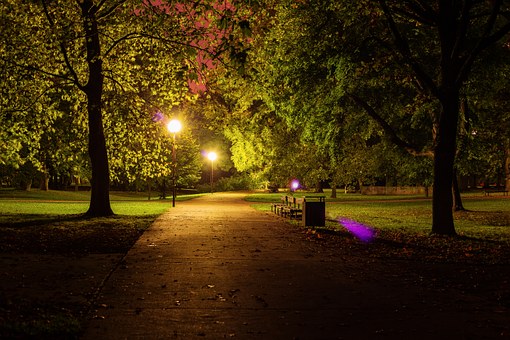
In the second chapter of Born to Walk, which focuses on how walking can address mental health concerns such as depression and anxiety, research conducted by University of Glasgow epidemiologist Richard Mitchell provides the scientific basis for many of my arguments. I spent some time walking around Glasgow with Rich, whose work explores the roles urban environments can play toward creating, maintaining and perhaps reducing inequalities in health. One of his current projects is looking at how improvements to the woodlands in Scottish communities with low socio-economic status, and more encouragement to use that green space, will impact the stress levels of people who live nearby. This is a major quantitative study in six different locations, three of them control sites where no changes to the woodlands were made. Data analysis is under way and results are pending, but in the meantime, Rich has shared with me a pair of recent and somewhat related papers published by others in the field.
In “Environmental Determinants of Aggression in Adolescents: Role of Urban Neighbourhood Greenspace,” which appears in the July 2016 issue of The Journal of the American Academy of Child & Adolescent Psychiatry, a group of researchers, many of them affiliated with the University of Southern California’s Keck School of Medicine, examined the association between neighbourhood greenspace and aggressive behaviour among urban adolescents. “Both short-term (1- to 6-month) and long-term (1- to 3-year) exposures to greenspace within 1,000 meters surrounding residences,” they concluded, “were associated with reduced aggressive behaviors.”
In his editorial (“It Takes a (Green) Village …”), which appears in the same issue of the journal, the Mayo Clinic’s Dr. Peter S. Jensen calls the aggressive behaviour research a “methodologically sophisticated, first-of-its-kind study” that takes into account factors such as maternal depression, neighbourhood quality and socio-economic status when looking at the impact of green space. “A concern I have harbored for over a decade,” he writes, “pertains to an increasing trend in child and adolescent psychiatry: although we are building ever stronger skills in DSM diagnosis and pharmacotherapy, it could be at the expense of a decreased understanding of the important developmental and environmental factors in shaping children’s behavior and emotions. Given the relative ease with which they can be quickly applied, my concern is that there might be a growing resort to psychotropic medication in handling problems that might be more appropriately addressed by our thorough knowledge of the child’s environment and developmental context.”
In other words, maybe we need to get some kids out playing in the park before prescribing them pills.
The second study shared by Mitchell, “Health Benefits from Nature Experiences Depend on Dose,” was published in the June 2016 issue of Scientific Reports. Its authors, most of whom are Australian, conclude that “Nature within cities will have a central role in helping address key global public health challenges associated with urbanization. However, there is almost no guidance on how much or how frequently people need to engage with nature, and what types or characteristics of nature need to be incorporated in cities for the best health outcomes…. We show that people who made long visits to green spaces had lower rates of depression and high blood pressure, and those who visited more frequently had greater social cohesion.”
In describing his own work to me, Rich Mitchell said that such studies could be dismissed as Research From The School Of The Blindingly Obvious. But unless one can make a quantitative empirical case for the benefits of spending time in urban green space, and the associated health care savings, it becomes much more difficult to make the case that we need to prioritize investments in our parks and woodlands, and in programs to get more people out and active.
On that note, it’s sunny and warm outside my office, and time to hit the trails.



Pingback: Scotlaaaand! – Bjütie